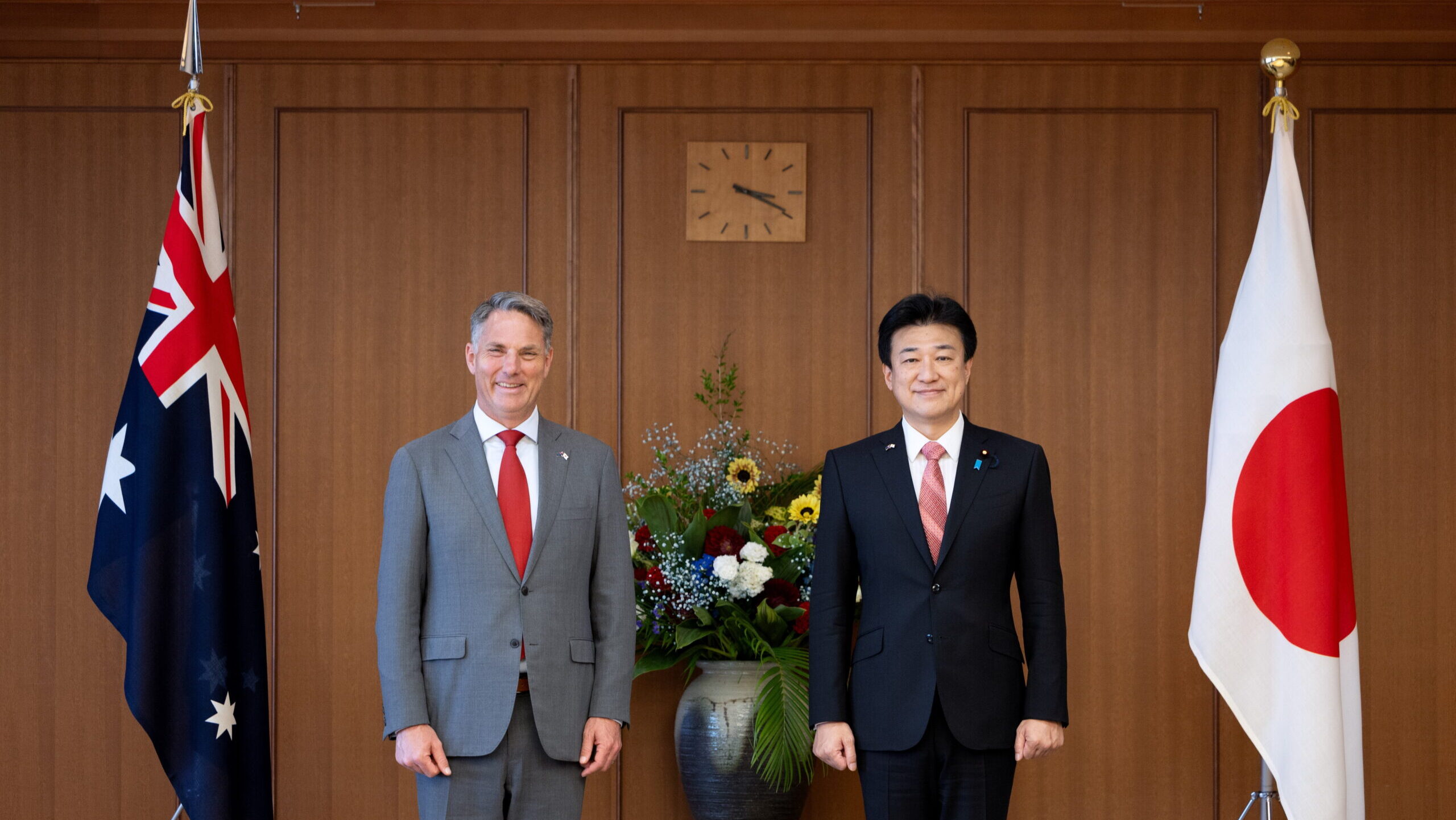
Australian Defense Minister Richard Marles meets with Japanese Defense Minister Kihara Minoru in Tokyo in Oct. 2023. Photo by Rodney Braithwaite, ADF
SYDNEY — For the first time, two of America’s closest allies have agreed to pursue advanced research on key capabilities — “strategic capabilities in robotic and autonomous systems for undersea warfare” — for the Indo-Pacific.
A statement from the Australian government said Canberra’s Defense Science and Technology Group (DSTG) and Japan’s Acquisition Technology and Logistics Agency would team up for an “inaugural project” that will “contribute to strategic capabilities in undersea communication and interoperability between Australia and Japan.”
It’s the first project since the June 2023 Shangri La Dialogue, during which Australian Defense Minister Richard Marles, Japanese Minister of Defense Hamada Yasukazu and US Defense Secretary Lloyd Austin agreed to “expanded cooperation” in research, development, test and evaluation aimed at boosting cooperation “across multiple domains, including in integrated air and missile defense (IAMD), intelligence, surveillance, and reconnaissance (ISR), and undersea warfare.”
The new agreemenet “illustrates the increasingly strong Defence science and technology relationship shared by Australia and Japan. By partnering we deliver science and technology outcomes that we cannot achieve alone,” Tanya Monro, Australia’s chief defense scientist, said in the statement. “This project will build a foundation for future joint research on robotic and collaborative autonomy, aiming to deliver advanced capabilities to support asymmetric advantage.”
But, as is common with Australian defense communications, the release “is incredibly thin on details,” Marcus Hellyer, an Australia defense acquisition expert, said in an email. “Who knows what that means? What is the project exactly? It doesn’t say who will be participating from industry or academia. Will DSTG be doing this in house? How many dollars/yen? It’s the standard absolutely nothing-y Defence media release we’ve come to know so well.”
Japan is not a party to the Australia-United Kingdom-US security arrangement known as AUKUS, but a former Australian diplomat told Breaking Defense the Australia-Japan research agreement lines up well with AUKUS Pillar II’s focus on tech.
“Both Australia and Japan have made it clear, along with the US of course, that they want to collaborate on Pillar [II] (quite explicit in PM level declarations and in 2+2 statements.),” said the former diplomat, who spoke on the condition of anonymity.
Hellyer was more skeptical about Pillar II. “Synergies with AUKUS Pillar 2? Well, there’ve been virtually no announcements there either. So how this unexplained AUS-JP mystery bag will synergise with the unexplained AUKUS mystery bag is anybody’s guess,” he said.
RELATED: Austin, AUKUS partners announce Pillar II plans: Maritime exercises, DIU challenges, industry forums
The Australian Ministry for Defence has not responded as of press time to Breaking Defense’s request for more specifics on the R&D agreement with Japan.
Japan, although it created the Acquisition, Technology and Logistics Agency in 2015, has struggled to develop and sell products to other countries.
They came relatively close in 2016, but Australia opted to buy French attack submarines instead of the Japanese Soryu-class. (Of course, Australia dropped the French and committed to buying and building nuclear attack boats with the US and Britain as Pillar 1 of the AUKUS agreement.)
But Japan, clearly shocked by Russia’s invasion of Ukraine and China’s increasingly unpredictable actions in the South China Sea and around Taiwan, is pressing ahead to do more in terms of arms development and exports, the former Australian diplomat noted. They’ve committed to doubling their defense budget, but indications are much of that money will go to improve salaries and benefits, not to buy or develop weapons.












